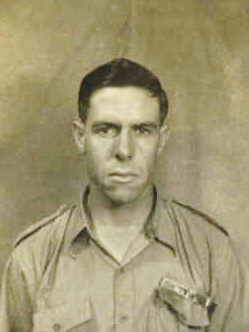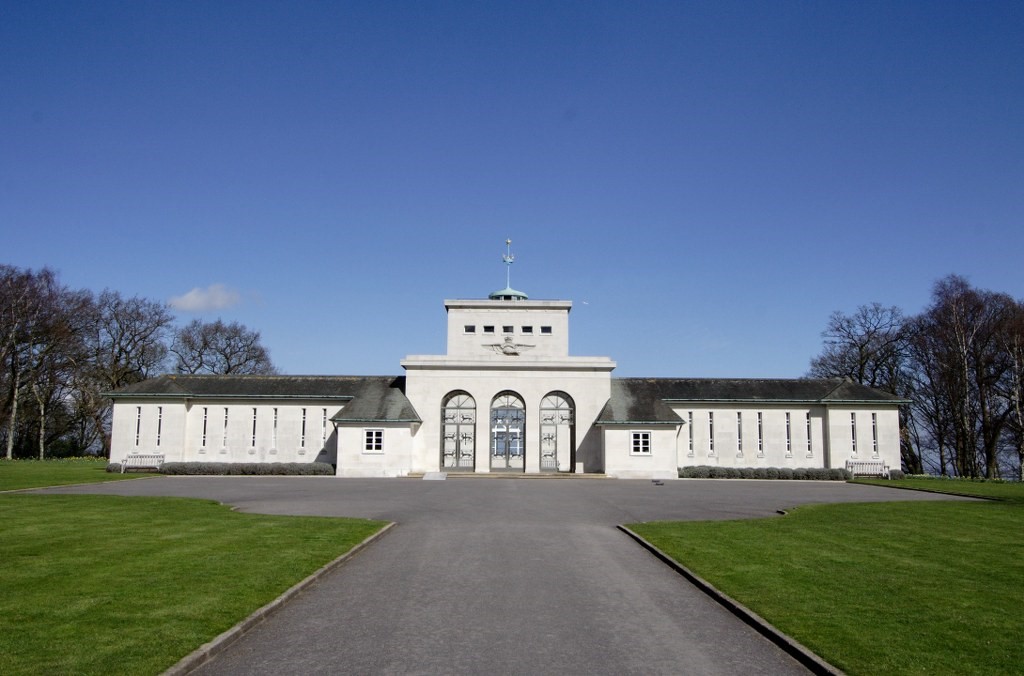Flying Officer Lincoln Hole, the son of Samuel Kenneth Hole and Sarah Ann Hole (nee Bell), was born at Tambo in Queensland on 23rd February 1918. He was educated at the Toowoomba Grammar School. He was enrolled in the Reserve of the Royal Australian Air Force on 12th June 1940 after swearing the statutory oath of allegiance. At the time of his enrolment he was unmarried, employed as a Pastoral Student and residing at Toliness Station, via Augathella in Queensland. At the age of 23 years and 4 months he was enlisted into the Citizen Air Force of the R.A.A.F. at No. 3 Recruiting Centre in Brisbane on 20th July 1941 after giving a commitment that he would serve for the duration of the war and an additional twelve months. His physical description was that he was 5 feet 11 inches in height and weighed 155 pounds. He had a dark complexion, brown eyes and dark brown hair. He stated that he was of the Church of England religion. He gave his next of kin as his mother, Mrs Sarah Hole, residing c/- Mrs Handly, 35 Anzac Avenue, Toowoomba. He also gave his father, Mr Samuel Hole, Tolinga Station, Augathella, as one to be notified in the event of his injury or death.
Flying Officer Lincoln Hole was allotted the service number of 414031. He joined No. 3 Initial Training School at Amberley on 20th July 1941 where he received training in military discipline and the basics of military aviation. He joined No. 2 Service Flying Training School at Archerfield in Queensland on 16th October 1941 where he received instruction on basic single-engined aircraft. He was selected for training as a Pilot and he joined No. 3 Service Flying Training Unit at Amberley in Queensland on 14th December 1941 where he received advanced training on single and multi-engined aircraft. He joined No. 1 Service Flying Training School at Point Cook in Victoria on 1st April 1942. After completing his training at Point Cook he was awarded the Pilot Qualification Badge and promoted to the rank of Temporary Sergeant on 30th April 1942. He joined No. 3 Embarkation Depot at Sandgate in Queensland on 15th May 1942 and proceeded on pre-embarkation leave. He joined No. 2 Embarkation Depot at Bradfield Park in New South Wales on 20th May 1942 to prepare for movement overseas on attachment to the Royal Air Force. He embarked from Australia on 16th June 1942. After disembarking in England he joined No. 3 Personnel Despatch & Reception Centre at Bournemouth on 25th August 1942.
Flying Officer Lincoln Hole joined No. 11 (Pilot) Advanced Flying Unit at Royal Air Force Station Shawbury on 11th September 1942. He was promoted to the rank of Temporary Flight Sergeant on 30th October 1942. He joined No. 7 Flying Instructors School at Royal Air Force Station Upavon on 11th November 1942. He joined No. 6 (Pilot) Advanced Flying Unit at Upavon in on 10th February 1943. He rejoined No. 7 Flying Instructors School on 24th May 1943. He was commissioned as a Pilot Officer on 12th October 1943. He joined No. 1537 (Beam Approach Training) Flight at No. 11 Advanced Flying Unit on 19th January 1944. He was promoted to the rank of Flying Officer on 12th April 1944. He joined S.P.T.U. as a flying instructor on 1st June 1944. He joined No. 103 Squadron at No. 71 Base at Royal Air Force Station Elsham Wolds on 20th February 1945.
Flying Officer Lincoln Hole was the Pilot and Captain of a No. 103 Squadron Royal Air Force Lancaster bomber LM 177 that was lost due to enemy action over the coast of Denmark on 5th April 1945 whilst on an air operation to lay mines in enemy waters at Aarhus Bay, Denmark. Interrogation of other crews involved in the air operation revealed that three aircraft were shot down, one crashing just inside the Danish coast and the other two into the sea. After the war the Missing Research & Enquiry Service conducted extensive investigations to try and locate the remains of the missing airmen. The Secretary Department of Air, Canberra, wrote the following letter to Lincoln Hole’s mother on 18th January 1949:
Dear Madam, I refer to previous communications concerning your late son, Flying Officer Lincoln Hole, and now advise that a report has been received from Overseas headquarters, Royal Australian Air Force, London. The report states that all efforts by the Missing Research & Enquiry Service to find any trace of your son’s aircraft or to establish whether the bodies of any members of the crew were ever recovered for burial, have proved unsuccessful. In view of this complete lack of evidence, it is now concluded that your son and his comrades were lost at sea. It is proposed, therefore, to commemorate your son by including his name on a memorial which will be erected at a later date by the Imperial War Graves Commission, to the memory of those deceased members who have no known grave. Details concerning the location and form of this memorial have yet to be decided by the Commission. Permit me to assure you once again of the sincere sympathy of this Department in your great loss. Yours faithfully, M.C. Langslow, Secretary.
Flying Officer Lincoln Hole, at the time of his death, was 27 years old. His name is commemorated on Panel No. 124 at the Australian War Memorial in Canberra and locally on the Toowoomba Grammar School World War 2 Roll of Honour. For his service during World War 2, he had eligibility for the Pilot Qualification Badge, the 1939/1945 Star, the Aircrew Europe Star, the Defence Medal, the War Medal and the Australian Service Medal 1939/1945.
Toowoomba Grammar School archive records show that he enrolled as a boarder on 30th January 1934 and left the School on 6th December 1935 after completing the Junior examination in which he passed eight subjects. His parent is shown as Mr Samuel Kenneth Hole, “Toliness”, Augathella. He was awarded General Robertson’s Prize for his Junior essay. After leaving school he worked at the Toowoomba Foundry.




